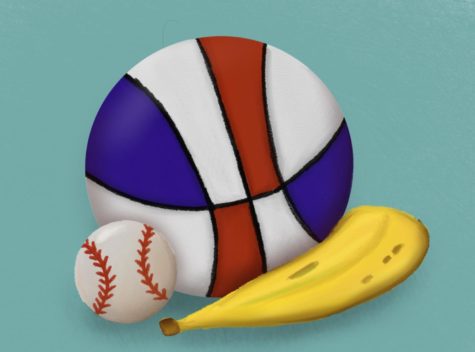From the Basement | Wacky world of exhibition sports
April 29, 2023

Two weeks ago, the world famous Harlem Globetrotters came down to New Orleans and played their own special brand of basketball at the University of New Orleans Lakefront Arena. Known for their flashy trickshots and fancy dribble moves, the Globetrotters have been the premier exhibition basketball team for over 90 years. Playing that night against their longtime rival, the Washington Generals, the team has traveled all over the world and showcased its creative talents to fans of all ages.
Today, they are mostly considered an entertainment group much like a circus act, but the Globetrotters were innovating the sport of basketball early in its history. Basketball was still very much in its infancy when the Globetrotters arrived on the scene in 1926. The sport itself was only invented in 1891 by James Naismith at a small YMCA in Massachusetts, and it looked nothing like the basketball seen on TV today. The Globetrotters first implemented many of the creative “streetball” moves like inside-out handles and fast breaks that are now common in the NBA.
The Globetrotters played against an NBA team twice back in the 1940s, defeating the reigning champion Los Angeles Lakers in 1948 and 1949. The NBA had not yet racially integrated at that time, and Black players were blackballed from playing in the league. The first Black player to sign an NBA contract was Nat “Sweetwater” Clifton in 1950, who was originally a member of the Harlem Globetrotters. Earl Lloyd, another former Globetrotter, was the first Black player to play in an NBA game in 1950. NBA legend Wilt Chamberlain began his professional basketball career with the Harlem Globetrotters from 1958-59.
The Globetrotters helped to innovate the sport of basketball for the better, and perhaps the Savannah Bananas — a lesser-known exhibition baseball team based in Savannah, Georgia — can do the same for baseball. The MLB has been adapting its rules in an attempt to speed up the slow pace of the game and attract a wider audience, by adding a pitch clock and adding bigger bases. Alongside the Bananas’ wacky dances and scoring celebrations, the team plays by its own rules to make the games fast and action-packed for the fans.
Among the nine “Banana Ball” rules, games are kept under two hours, there is no bunting allowed, players can steal first base and a fan catching a foul ball counts as an out. The rules maintain the overall frame of baseball the same but throw in twists to keep the game exciting at all stages.
The Savannah Bananas have exploded in popularity since committing to their own brand of entertaining baseball. The team has sold out every home game since 2016, and there is currently a waitlist of nearly half a million people for their 2023 cross-country tour. Baseball as a whole has struggled to connect to the younger generations of sports fans, but the Bananas have made a huge splash with their social media presence. Their official TikTok account has over 5.7 million followers — more than any team in the MLB.
Unlike the Harlem Globetrotters, the Bananas games are not scripted. The creative team plans skits and other shenanigans during the games against their rivals, the Savannah Party Animals, but both teams are evenly matched and play to win. The games are a creative and fun environment for the fans, blending an engaging baseball match and a circus.
The MLB has been willing to embrace elements of the Bananas’ wackiness. The Major League Baseball Players Alumni Association put together a roster of retired MLB players to play in a game of “Banana Ball,” bringing together new and old fans of the game. Big name retired players like Johnny Damon made an appearance against the Bananas.
The Savannah Bananas are only growing more and more, and they have the chance to change the identity of baseball for the better, much like what the Harlem Globetrotters did for basketball. The MLB has shown a willingness to change long-standing aspects of the game to make the game more appealing for the next generation of sports fans, and including some elements of “Banana Ball” can help the game continue to grow.






















Leave a Comment